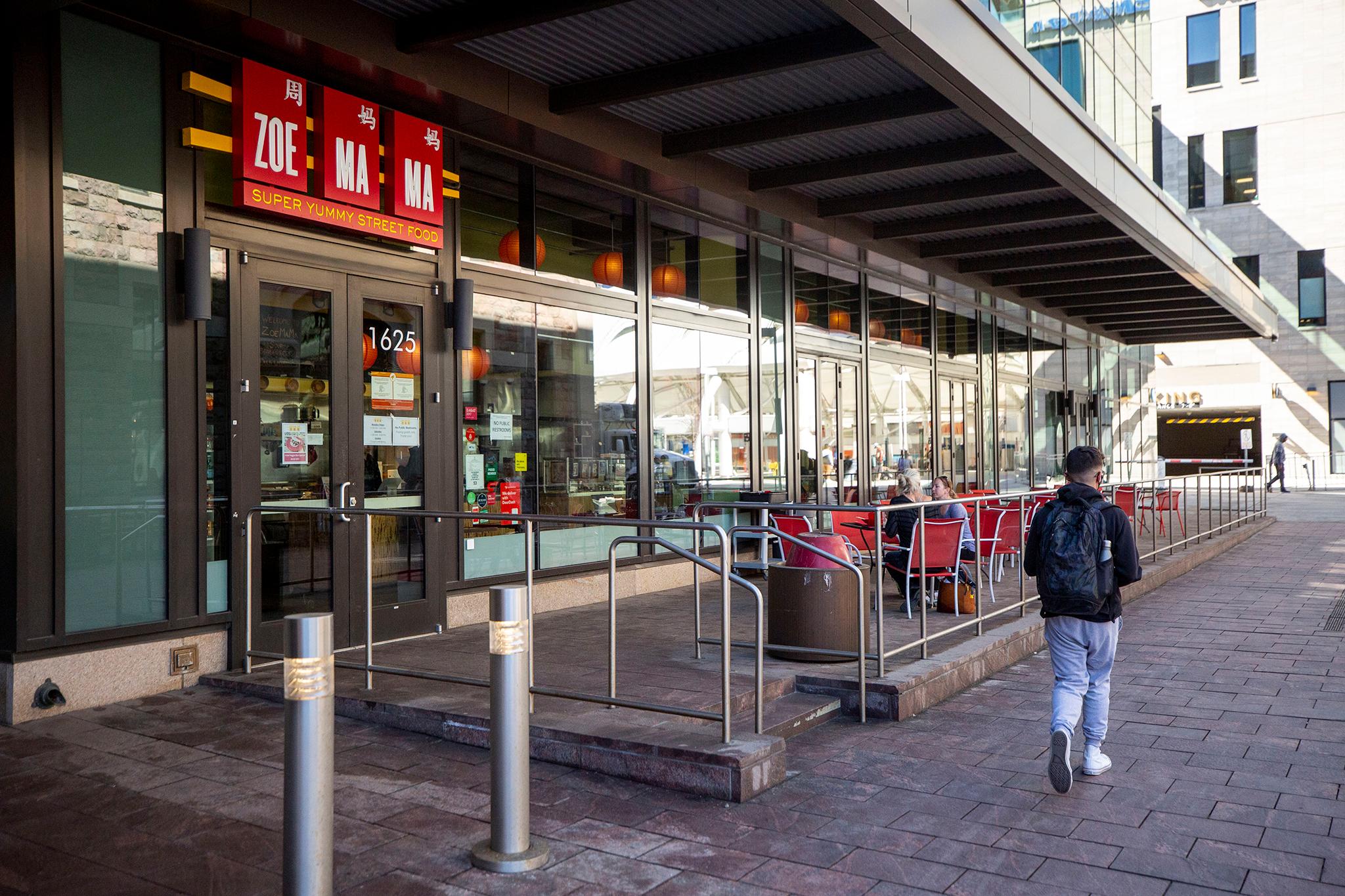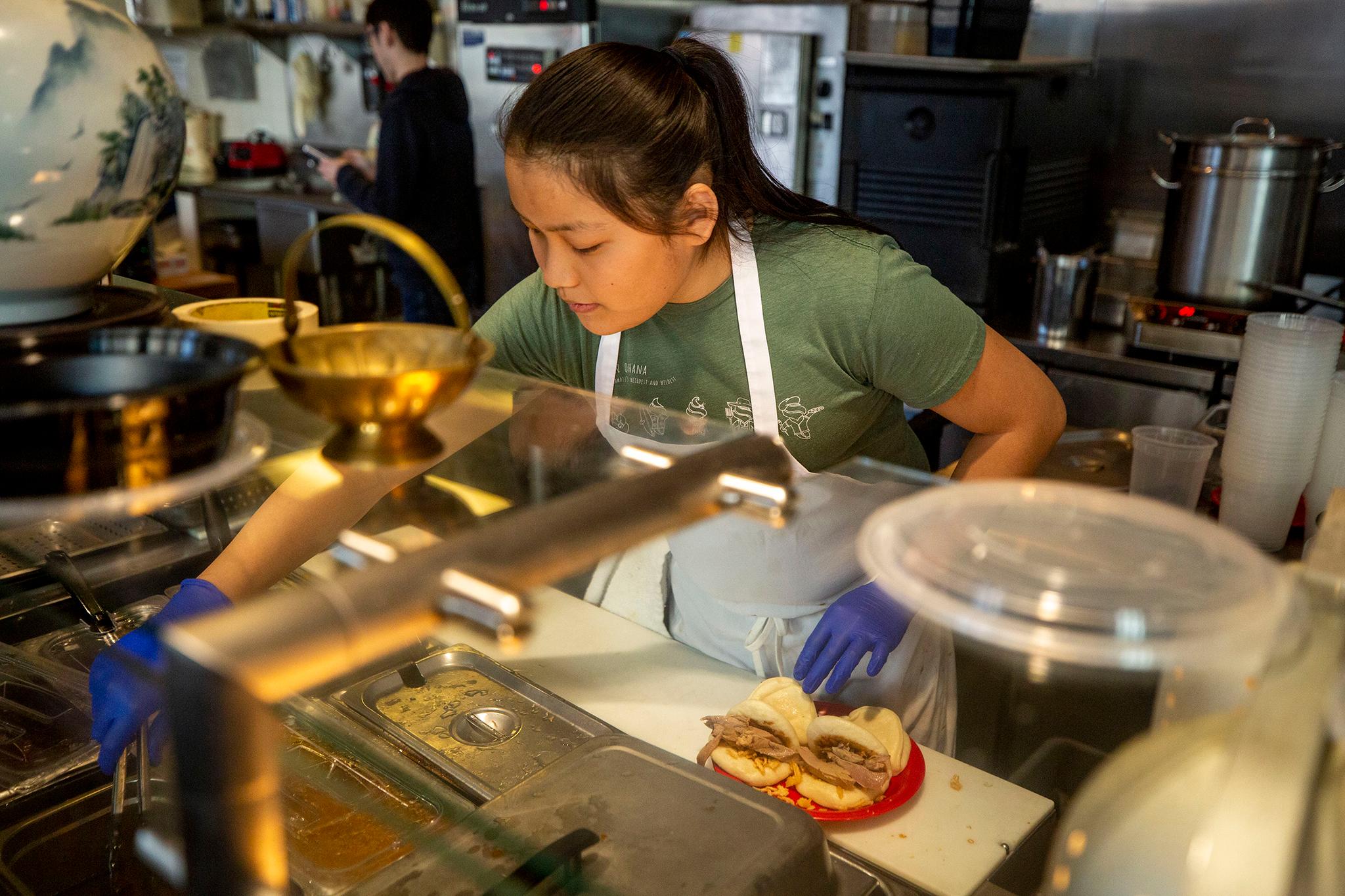When you go to a restaurant these days, your bill might look a bit different from how it did before the pandemic.
In the last couple of years, dozens of restaurants across Denver have implemented a new billing method: a designated percent-fee tacked on to the end of a bill. Some restaurants call it a "surcharge." Some call it a "service fee." Bonanno Concepts, which owns restaurants like Mizuna and Denver Milk Market, calls it the "Creating Happy People Fee."
While each restaurant has its own approach in terms of how much to charge and how to distribute money earned from the fee, each of these fees functions more or less the same: as an additional revenue stream on a restaurant bill.
In recent weeks, Denverites have taken to online forums to discuss surcharges they've seen crop up. Some patrons complained that the fees are less transparent than simply bumping up menu prices as a way to increase revenue. Others worry that the fees, which are often presented as a way to pay staff a living wage, aren't being used expressly for that purpose.
We spoke to restaurant owners and industry experts to get to the bottom of how these fees work, who benefits from them and why so many restaurants are moving away from the traditional U.S. tipping model. Here's what we found out.
What exactly is a service fee, and why are we seeing them?
"Any non-discretionary charge added to a restaurant or bar customer's bill, regardless of what it's called, is a service charge," Mollie Steinemann, the Colorado Restaurant Association's manager of government affairs, told Denverite in a written statement. "Auto-gratuities fall into this category, as do things like health and wellness charges, back-of-house service charges, and anything else that a customer can't opt into. Service charges are considered revenue and operators are required to collect sales tax on them."
Steinemann explained that after the pandemic hit, some Denver restaurants initially implemented service charges as a way to offset increased costs. If you dined out in 2020, you may have encountered a COVID-19 service charge, which some restaurants implemented to help pay for personal protective equipment like masks and hand sanitizer or to cover other pandemic expenses like takeout packaging.
As pandemic conditions have improved and capacity restrictions have relaxed, some restaurants have continued the use of surcharges to more permanently restructure their billing and payment systems beyond the pandemic. Now, many restaurants use the fee to offset pay disparities between front-of-house staff like bartenders and servers, who typically make tips in addition to their tip-adjusted hourly salary, and back-of-house staff like cooks, dishwashers and managers who don't make tips, as a way to retain staff during the labor shortage. Some restaurants, like Annette, DiFranco's, Somebody People and WONDER Press also initiated a small surcharge in partnership with the Zero Foodprint initiative, which raises funds to support carbon farming projects dedicated to offsetting climate change.
Some restaurant owners have implemented the fee to replace the tipping system altogether.
Edwin Zoe, owner of Chinese street food restaurant Zoe Ma Ma in Union Station, has been using a 15% service fee in place of tips for years, long before the pandemic.
"For years, I felt there were many systemic inequities caused by tipping," Zoe said.
For example, back-of-house staff like dishwashers don't have access to tips. Zoe said that typically means dishwashers make far less money than service staff.
"The income disparity is often startling," Zoe said. "For example, a full time adult dishwasher usually earns barely minimum wage, while a young part-time server can make twice as much."
He said the tipping system can be harmful to servers as well, and particularly women and LGTBQ+ servers. He said customer-facing staff who depend on tips for income may feel the need to put up with harassment from guests in order to earn a livable wage.
"Many feel the need to accept it for fear of getting bad tips, or not getting tipped at all," Zoe said.
He said there are also racial and gender disparities in tipping, and referenced a Cornell University study that famously found that white and nonwhite customers both tipped Black servers less than white servers. Some historians have found that the American tipping system is rooted in racism: The system emerged from the Civil War as a way to continue to pay Black workers low or zero wages.
Today, restaurant owners like Zoe are working to eliminate tipping as a way to eradicate some of those disparities. He uses Zoe Ma Ma's service fee to bump up the hourly base salaries of all staff.
"What I really want to be able to do is really decouple service fee to the idea of tips," he said. "If I had my choice, I would really put the tipping model to bed for good, simply because it just creates a lot of friction points."
Alex Seidel is the chef and owner of Denver restaurants like Fruition, Mercantile, Füdmill and Chook. Near the start of the pandemic, he implemented a 20% surcharge at Fruition and Mercantile.
"If you look at the restaurant industry, it's evolved over the years, and it's been imbalanced," Seidel said. "I'm trying to find a way to make restaurants a better way of living for people, and being able to provide different benefits."
In 2019, Denver approved a citywide minimum wage increase that would go into effect in January 2022. Seidel said that while he's all for more protections for employees, he worried it would be difficult to maintain a business under the restrictions with their previous tipping model, especially during the pandemic. Seidel decided to switch to the surcharge model in 2020. He said it's helped him provide staff with higher hourly wages, as well as benefits like healthcare.
"That surcharge is what our restaurant provides the community as a group, as a team," he said. "And those dollars are figured into our financials so that we can provide more benefits, higher wages, balanced wages, ability for growth. Those are the things that we can control by doing a surcharge model. Versus a tip system, there's no control."
Who gets the money earned from a service fee?
Service fees do not function like tips, which are non-compulsory gifts from the customer directly to the staff. Instead, service fees are simply an additional form of revenue. They bring in additional funds that owners can then distribute as they see fit.
There are different models for service fee distribution within the industry. How the funds are split among staff varies from restaurant to restaurant.
"Service charges typically appear on a customer's bill with a brief explanation of the purpose of the charge - i.e., to replace tipping, add to back-of-house wages, or offset expenses, depending on the circumstance - and the amount or percentage of the charge," Steinemann said in an email to Denverite. "Some restaurants also post signage at tables or on menus to communicate their approach to service charges and train their customer-facing staff members to explain the reasoning behind the service charges."
For places like Zoe Ma Ma, the service fee is meant to replace tips and is used to pay all staff a "livable" wage across the board. At places where the service fee is intended to supplement back-of-house income or cover other expenses, tips may still be expected for servers and bartenders. Customers concerned about the use of service fees and how they're distributed should research individual restaurants to determine if the fee is meant to replace tips or if they should still expect to tip.


Some restaurants prefer this method over a tip pool method, which gathers all tips earned by front-of-house staff to distribute among non-management staff.
That's in part because legally, there are different wage requirements in Colorado for tipped versus non-tipped employees. Tipped employees in Denver must make at least $12.85 per hour, while the minimum wage for non-tipped employees is $15.87 per hour. Workers must have face-to-face interaction with customers to qualify for a tipped salary. Employers may take $3.02 off of a tipped employee's hourly wage, as long as that employee makes up at least that much in tips.
At first glance, a tip pool model might seem more appealing to restaurateurs who want to make sure everyone earns a livable wage at no cost to the restaurant itself. Sales tax is collected on service fees, but not on tips. In fact, restaurant owners receive tip credits on their taxes. By implementing service fees in place of tips, they forego those tip credits. And because service fees are treated as non-tip income, funds from service fees cannot count toward offsetting the $3.02 minimum wage difference.
But in order for a restaurant to legally qualify for a tip pool model that includes back-of-house staff, all staff, including servers and bartenders, must make at least the full minimum hourly wage ($15.87). In those cases, the tip pool system eradicates the perks of the tip credit and the lower-cost tipped salary for front-of-house employees.
Meanwhile, using a service fee model doesn't necessarily mean restaurants are required to pay front of house employees full minimum wage. Front-of-house workers can still receive a tipped wage under a service-fee model as long as they are receiving enough tips to offset the $3.02 difference between a tipped and full minimum. This may enable restaurants to use the extra revenue from the surcharge to bump up pay for back-of-house staff without eliminating the possibility of front-of-house staff making above full minimum with tips.
Another downside of a tip pool model, from the perspective of restaurant owners, is that managers and supervisors are not allowed to participate. Seidel says that in a tip pool model, tipped servers can make more than managers, which he says disincentives growth: Why would a server want to grow into a managerial position if they can earn more with a tipped salary?
"Managers, general managers, chefs, sous chefs spend probably 10 hours a day there. And they're the key holders. And they're the vision," Seidel said. "And it's becoming harder and harder to pay managers more than tipped employees... When you're talking about servers maybe making $40 an hour, versus a cook that was making $15 an hour, there's a lot of disparity there."
A service fee, in comparison, allows restaurant owners to distribute the funds how they like based on performance, degree of responsibility, work ethic, knowledge and level of experience. They can pay managers and supervisors higher salaries and establish a hierarchy and rewards system that Seidel says encourages professional growth into bigger roles.
Who wins, and who loses, with a service fee model?
Zoe said that while Zoe Ma Ma's service fee was designed in part to address worker inequities, he's found that servers generally don't like it because they tend to make more money with a tipped salary, or because they feel rewards for good service should be paid directly to them.
"Equity doesn't mean that everybody's happy," Zoe said.
Still, he said that when hiring staff, the service fee allows then to tell employees up front exactly how much they will make an hour, regardless of how busy the restaurant is or how agreeable customers are.
"That provides a lot of consistency of income for our employees and enables us to be able to level the playing field between the front of the house and back of the house," Zoe said.
He said some customers have embraced the idea of the service fee, and others complain that it takes away their individual freedom to tip as much as they like.
Some customers wonder why restaurants don't simply raise their prices as a way to more transparently increase revenue. Because service fees are a relatively new practice, customers don't always know to look out for them before choosing a place to eat. Zoe said that different businesses have different approaches to communicating to their guests that they use a service fee model and how they use surcharge funds on the backend.
"It's a mess," Zoe said. "There's going to be turbulence and friction, friction points."
He said one reason restaurants opt for the surcharge is because it's new. The industry is still adjusting to eliminating tips, and customers are getting used to changes. As the culture shifts, it's no longer a level playing field. Restaurants have to make choices that give them a competitive edge and allow them to continue to attract customers.
Zoe said that raising prices might deter customers who look at menu prices before deciding on a restaurant.
"I feel like we're in a transition period," Zoe said. "If it's a level playing field, meaning that all restaurants do this, then yeah, I think that's even better. But because it is not a requirement, then restaurants that kind of step ahead are at a tremendous competitive disadvantage."
Still, Zoe thinks things are moving in a positive direction.
"If there's one good thing that came out of the pandemic, is we as a community and as a society, have recognized more of the value of hospitality workers and low wage workers," he said. "What I have seen is that there has been a tremendous jump in the pay of lowest wage workers."












